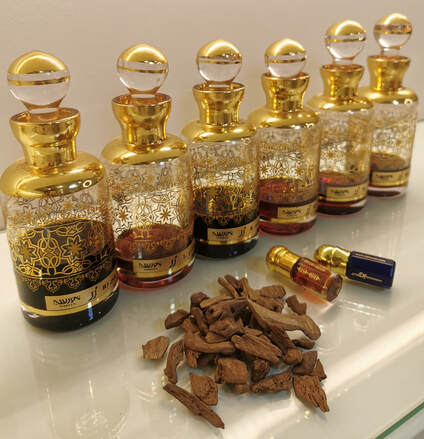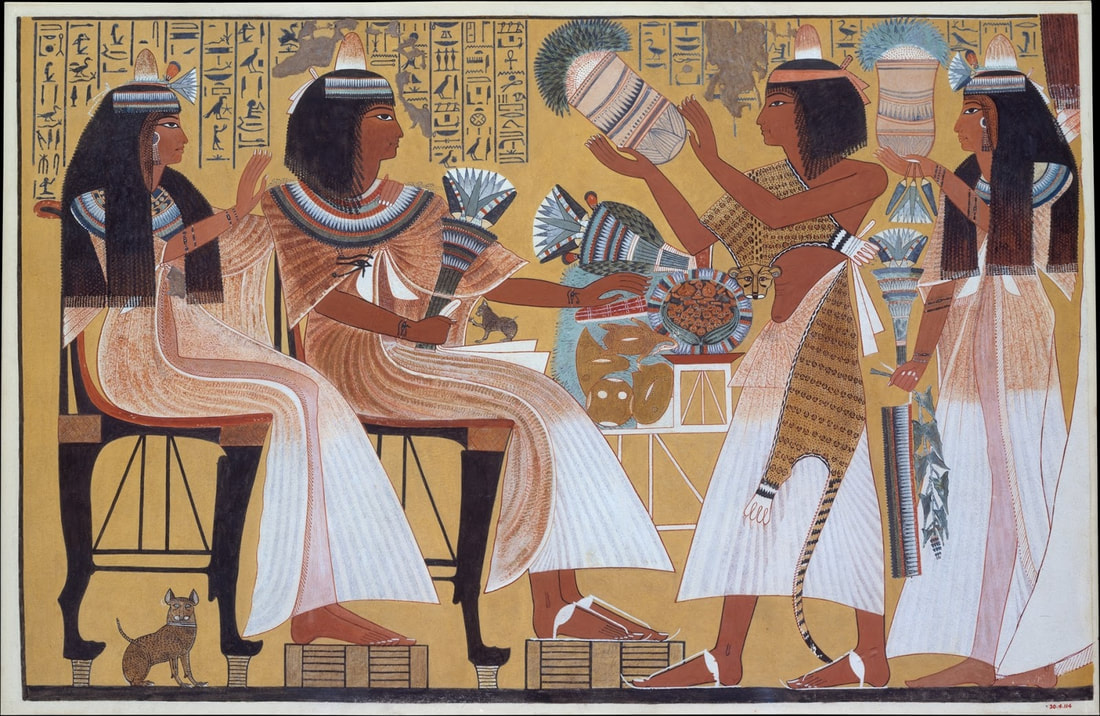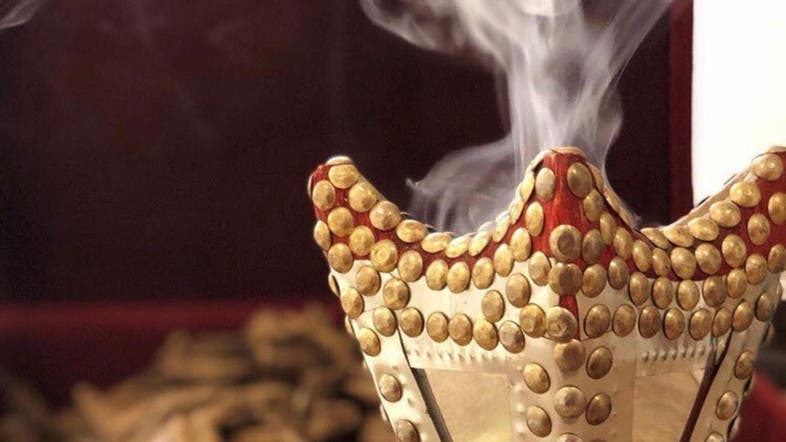IPF Founder and Chair, Historian and Anthropologist
Oud originates from Aquilaria trees found in India and Southeast Asia. The wood found inside these trees gets a particular mold, which gives it a unique fragrance. The initial scent of Oud is quite strong but over time it becomes subtler and is quite lasting.
Oud has more than 3000 years of history, and its use began in China, Japan, India and the Middle East. At that time, only kings, emperors and the wealthy could benefit from it and appreciate its virtues.
During the time of the pyramids and the pharaohs, the Egyptians used it in their rituals to embalm the bodies of privileged families.
Between 800 and 600 BC. Gaharu is mentioned in the Sushruta Samhita, which is a Sanskrit (ancient Hindu) text about the medicine and surgery of the time. It is also mentioned in the biography of an emperor of North India (Harshacharita) in 700 BC. J.-C. Around the same time (600 BC), Xuanzang, a Buddhist monk from China, described the use of aloe wood and its oil for writing sacred texts.
In 600 BC, in Japan, the Chronicles of Japan called "Nihon Shoki", the second oldest book on the classical history of Japan, mentioned the existence of aloe wood, following the discovery of a piece of wood identified as originating from Pursat, Cambodia, due to its typical scent of aloe wood from that region. This piece of wood is still in existence today, and belongs to the National Museum of Nara. It is displayed to the public less than 10 times per century, to prevent damage.
In 300 BC, in Ancient China, the chronicles of “Nan Zhou Yi WU Zhi” (“Strange Things from the South”) written by Wa Zhen of the Wu Dynasty mentions aloewood (agarwood). It was later discovered that wealthy families in Ancient China used calambac for creating the coffins of their deceased. Buddhists used aloewood for their mala (long bracelets or necklaces made of 108 wooden beads).
In the year 800, the use of oud wood for its medicinal properties is also mentioned in the Hadith Qudsi (Sacred Words) of Sahîh Muslim.
In France, King Louis XIV soaked his clothes in rose water, water that had been previously boiled with oud wood.
Historically, fragrances were oil-based. There is an old distillation style predominant in India where materials are distilled into Sandalwood oil – better known as Attar-style distillation.
In Muslim cultures, where alcohol is not used – there is a style of perfume compounding that is alcohol-free, and composed entirely of oil extracts, or Sandal or Oud oil as a base (rather than alcohol or carrier oil).
These oils are generally referred to as Attar or Mukhallats.
The different kind of oud presentations
1. Oud Oil, pure, as perfume material.
2. Oud Chips, as burning incence particularly for Middle Eastern countries (In Arabic Bukhoor)
3. Agarwood base wooden accessories such wooden keychain, bracelet, liontin or pendant.
4. Oudh block or chunk for any purposes such as Buddha sculpture, wooden home decoration, vintage.
5. Agarwood tea
The Middle East has a very important cultural heritage; it is urgent to protect and invest in the preservation of Oud.
Ever since the chemical industry began creating and patenting synthetic scent molecules to replace natural oud perfumes by synthetic oud, aquilaria trees have been considered as endangered species.
Vast forests of mature Aquilaria trees present in countries such as Cambodia, Malaysia, Thailand, Viet Nam, and India have been over harvested for the precious Agarwood raw materials to a point where some countries have actually forbidden companies to remove more mature Aquilaria trees.
As part of its World Heritage Program to protect fragrant flowers, plants and trees worldwide, The International Perfume Foundation is studying the situation of Aquilaria trees.
The Mission of The International Perfume Foundation is to protect this beautiful heritage of natural fragrance of Aquilaria trees in bringing alternatives to forest-based harvesting.
We recognize the unsustainable Aquilaria harvesting in natural forests that resulted in the near extinction of this tree genus. In addition, both in the short and long-term, a natural resource base needs to be maintained to supply present and future Aquilaria plantations with genetic source material in order to prevent plant decease, maintain diversity, and possibly improve resin production.
Aquilaria crassna, a tree species on CITES Appen- dix II and categorized as Critically Endangered on the IUCN Red List, is the main source of the highly valuable, fragrant and resinous agarwood that is extracted in forests in South- east Asia, exported to East Asian and Arab countries, and used for a range of medicinal, aromatic and religious products.
Aquilaria crassna (Family Thymelaeaceae) is an upper understorey tree occurring in primary ever- green and semi-evergreen forests at altitudes from 600- 1,400 m. Agarwood or gaharu is a dark-coloured, fragrant resin that accumulates in roots, trunk and branches of the tree as nodules of varying age, shape, size and commercial quality. Agarwood is formed by the tree in response to injury if the primary mechanism, formation of phloem callus tissue, is inhibited. The resinous agarwood acts as a chemical barrier to attacks by fungi and insects but under natural conditions it is not formed by all trees.
It is the ability of harvesters to determine if a tree is likely to contain agarwood in commercial qualities and quantities, and to decide with some confidence if a tree should be felled or not. For standing trees the presence of agarwood and its quality is assessed using several interrelated indicators: tree, stem and bark characteristics, phenology, wounding, presence of tree-boring insects, bore dust and ants, and various indicators that can be assessed after injuring the trees, e.g. black spots in the white sapwood. Trees with a Diameter at Breast Height (DBH) of more than 50 cm have a high likelihood of containing agarwood but even trees of 10 cm DBH may contain agarwood.
To fell a tree takes 0,5-4 hours and it is therefore possible to increase the daily net revenue considerably by harvesting trees that contain high quality agarwood. Potentially harvesters with good targeting ability will therefore leave trees without commercial qualities and quantities of agarwood untouched, leading to less impact on the population of Aquilaria while harvesters who have poor targeting ability will fell many trees.
High value/low quantity products are sold in regional, national and international markets, whereas low quality/ high quantity products are mainly sold in local markets.
To increase revenue, highly skilled harvesters are compelled to fell only the small number of trees containing high quality agarwood. These products are sold in regional, national and international markets, explaining why degree of commercialization and targeting ability are closely related. It is likely, therefore, that harvesting by experienced and knowledgeable harvesters will leave populations relatively intact except for removal of a few, large trees. By contrast, inexperienced harvesters are likely to be indiscriminate in their harvesting, leaving only a few trees intact and spending considerable time felling and chopping up trees that do not yield agarwood.
When agarwood-forming trees become increasingly harder to find, experienced, knowledgeable harvesters will abandon Aquilaria habitats and a dramatic decline in natural Oud will become dramatic for GCC very soon.
The International Perfume Foundation (IPF) is developing a program to protect Oud through a natural resource valuation approach for the benefit of local communities.
Sustainable Growing and Processing Aquilaria Planting Programs:
To protect Oud and prove its sustainabilityIPF World Heritage Programand Teacher’s Academy implement best practices for processing aquilaria for Oud fragrance using Best Practices.
- Help plant growers develop sustainable organic agricultural best practices for growing and harvesting trees for fragrance, insuring continuous sources of sustainable, high quality essential oud oils.
- Helping farms recognize the advantages of waiting until aquilaria trees mature before harvesting them to keep quality at the highest levels.
- Introducing effective agricultural methods allowing “cash” crops to be grown on the same parcel providing income while aquilaria trees are maturing.
- Introducing other plants and flowers to be grown along for perfumers or the same industry, as well as developing their distillation practices.
- Hire experienced harvesters to teach new harvesters and less experienced ones to secure the continuation of a sustainable supply chain.
- Certify growers and harvesters.
- Improve market access and increase value in trade to increase returns and employment opportunities, especially for poor and disadvantaged people.
- Create opportunities for conservation of ecosystems and preservation of valuable species
- Coordinating with WWF and other groups protecting Aquilaria worldwide to remove aquilaria trees from red lists.








 RSS Feed
RSS Feed